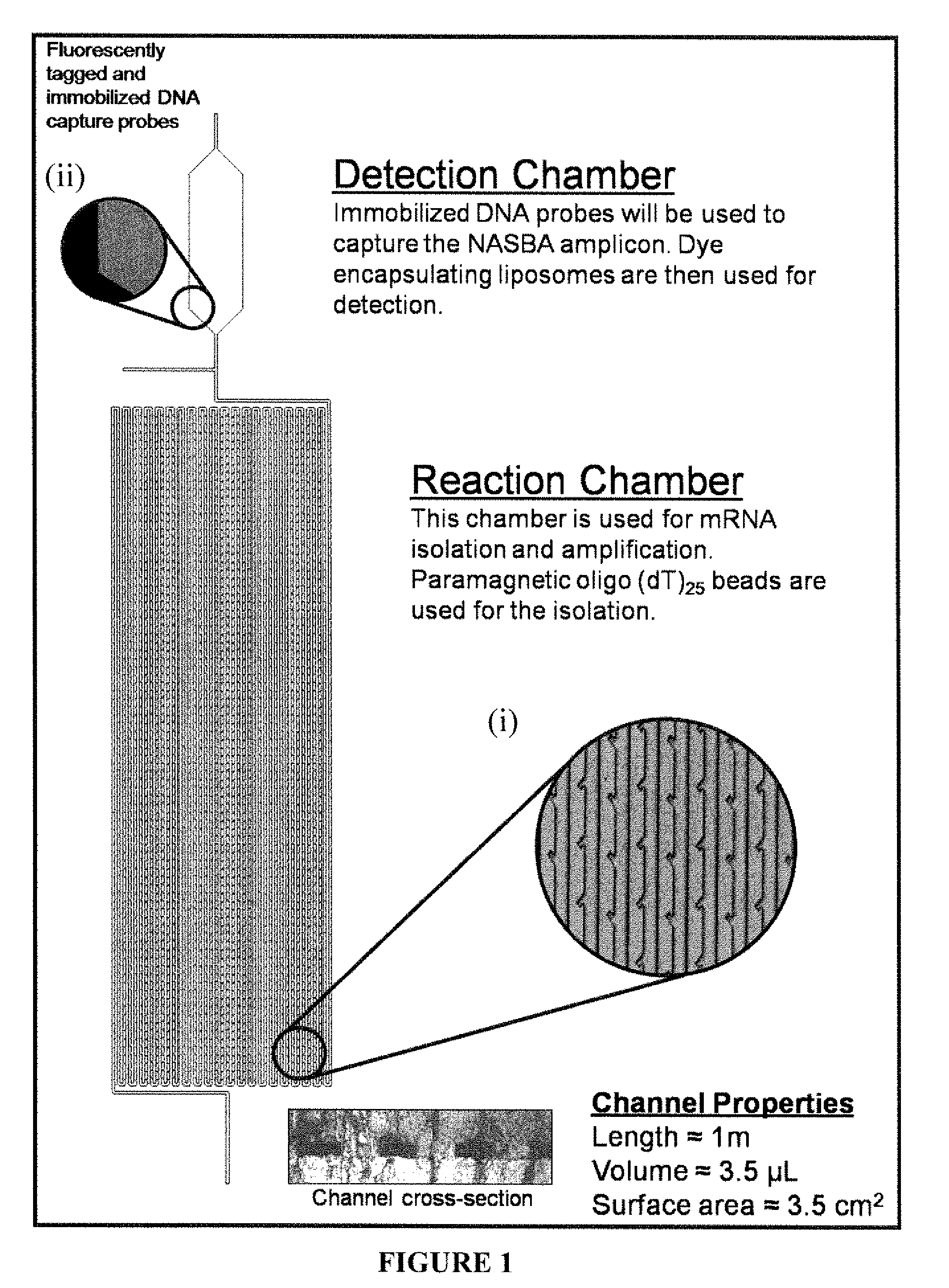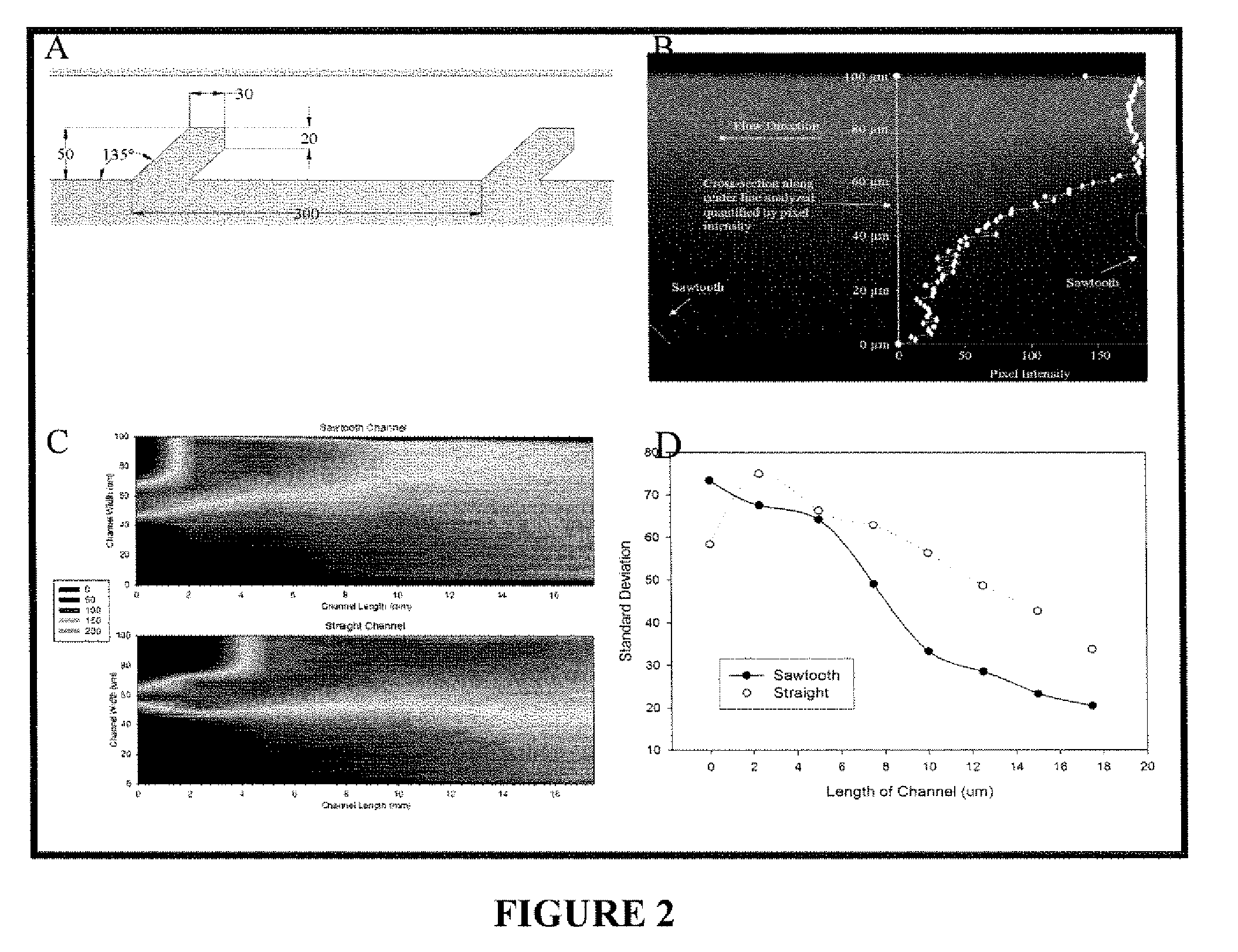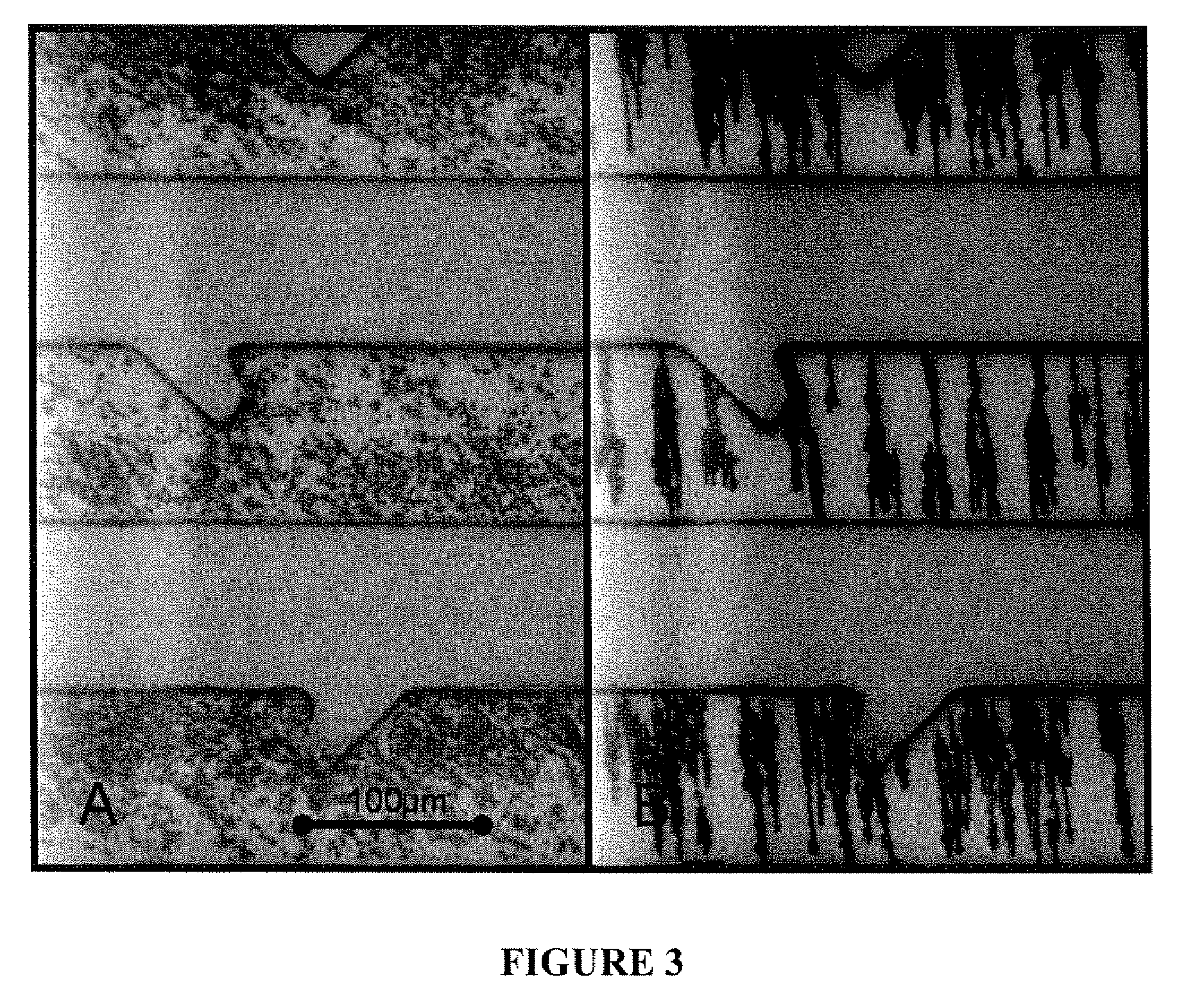Microchannel detection device and use thereof
a detection device and microchannel technology, applied in the field of microchannel detection devices, can solve the problems of insufficient nucleotide sequence information, high cost of ethidium bromide, and laborious and time-consuming process, and achieve the effects of reducing time, labor and cost of pathogen detection, and rapid production
- Summary
- Abstract
- Description
- Claims
- Application Information
AI Technical Summary
Benefits of technology
Problems solved by technology
Method used
Image
Examples
example 1
Micro-Total Analysis System Using Electrochemical Detection
[0104]A micro-Total Analysis System for the detection of RNA derived from cells or viruses is presented. As an initial model, analyte Cryptosporidium parvum was chosen. A poly(methyl methacrylate) (“PMMA”) biosensor was designed and fabricated which has the ability of detecting less than five C. parvum oocysts. Current EPA water standards incorporate labor-intensive microscopy which limits sample throughput. An automated and inexpensive biosensor could increase sample loads without much effect on labor.
[0105]Lysed C. parvum oocysts (Iowa isolate) were supplied by Wisconsin State Lab of Hygiene (Madison, Wis.). The oocysts were counted using flow cytometry and then lysed in a lysis binding buffer (100 mM Tris-HCl, pH 7.5, 500 mM LiCl, 10 mM EDTA, 1% LiDS, 5 mM DTT) using five freeze-thaw cycles. Oligo (dT)25 beads (Dynal, Oslo, Norway) were placed in the lysed sample and then allowed to hybridize for fi...
example 2
Micro-Total Analysis System Using Fluorescence Detection
[0129]A microfluidic biosensor that isolates mRNA, amplifies the hsp70 gene, and detects an amplicon resulting from less than ten oocysts using fluorescence detection was developed. The present example relates to a biosensor, having a surface functionalized microchannel, fabricated as described in Example 1, except that the system was designed to detect target RNA using fluorescence detection. Fluid flow through the channel network was established by applying a positive pressure at the inlet using a syringe pump (KD Scientific, Inc., Holliston, Mass.) and opening the outlet to atmospheric pressure. The connection between the top of the steel tubing and 500-L Hamilton gastight syringes on the pump was made via Tygon tubing with an inner diameter of 0.5 mm. All channels were prefilled with running buffer (10% formamide, 3×SSC (1×SSC contains 15 mM sodium citrate and 150 mM sodium chloride, pH 7.0), 0.2 M sucrose, 0.2% Ficoll type...
example 3
Immobilization of Dendrimers in Detection Region of Device
[0131]Generation 3.5 dendrimers were immobilized in the detection region of the microfluidic biosensor including a PMMA substrate. The functionalized ends of the dendrimer were then conjugated to DNA capture probes. These probes were used to immobilize target DNA while dye encapsulating liposomes served as a reporter probe by binding to another sequence on the target. Fluorescent images of the capture zone prior to binding, following binding, and then following liposome lysis show a successful detection of the target analyte (FIG. 13).
[0132]Dendrimer immobilization and capture was also demonstrated on a silicon substrate. The substrate was initially functionalized with (3-aminopropyl) trimethoxysilane (APTMS) followed by carboxylic-acid-terminated dendrimers. Analysis of the surface layers was conducted with a Imaging Ellipsometer (Nanofilm, Göttingen, Germany) for film thickness, VCA Optima XE (AST Products, Bellerica, Mass....
PUM
| Property | Measurement | Unit |
|---|---|---|
| Density | aaaaa | aaaaa |
| Magnetism | aaaaa | aaaaa |
| Magnetic force | aaaaa | aaaaa |
Abstract
Description
Claims
Application Information
 Login to View More
Login to View More - R&D
- Intellectual Property
- Life Sciences
- Materials
- Tech Scout
- Unparalleled Data Quality
- Higher Quality Content
- 60% Fewer Hallucinations
Browse by: Latest US Patents, China's latest patents, Technical Efficacy Thesaurus, Application Domain, Technology Topic, Popular Technical Reports.
© 2025 PatSnap. All rights reserved.Legal|Privacy policy|Modern Slavery Act Transparency Statement|Sitemap|About US| Contact US: help@patsnap.com



